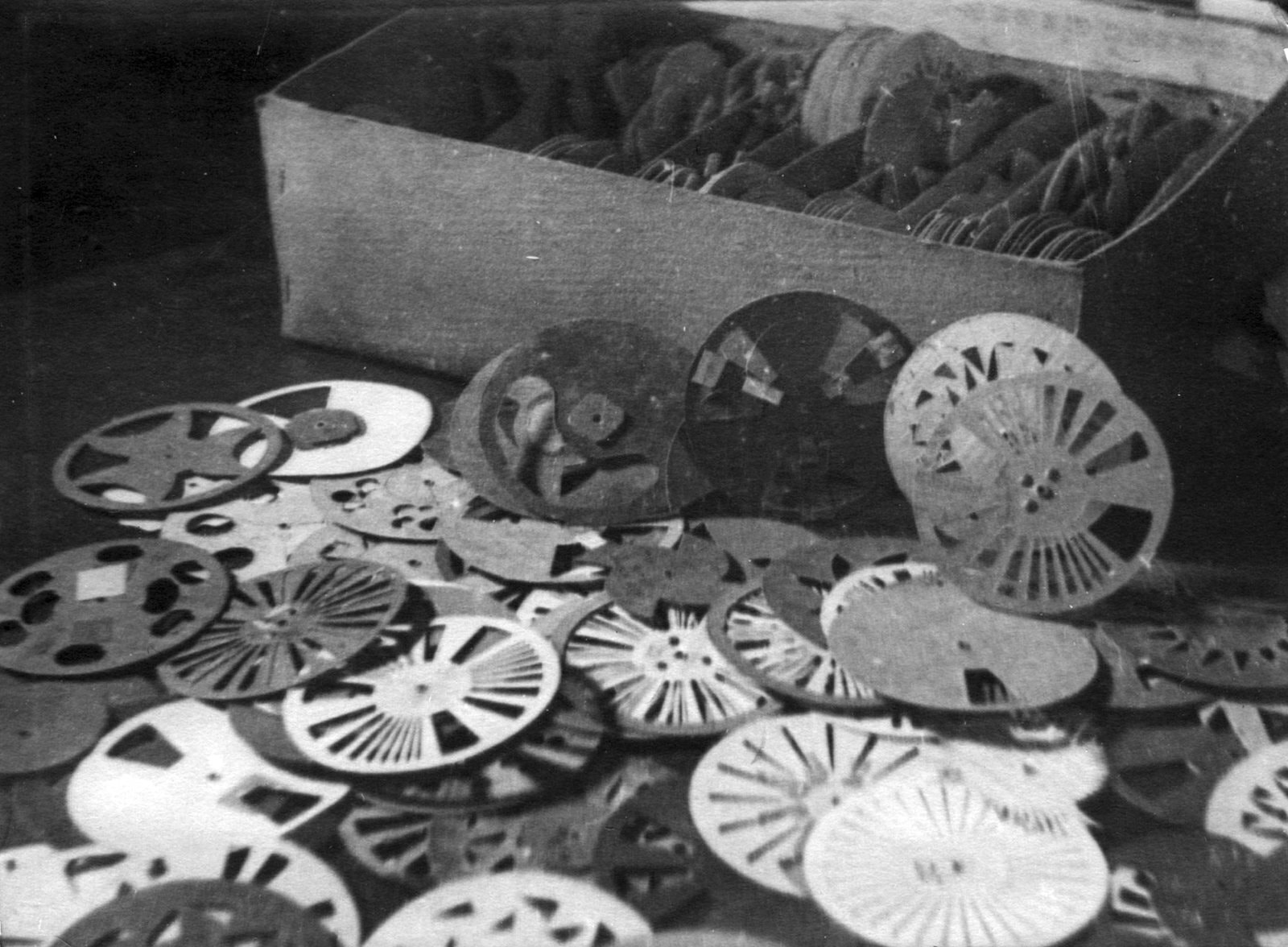Standard model. To utopia and back
A sound copy of the 1920s, an epoch that turned engineers into composers creating music with the help of machines.
The Narkomfin Building was conceived as a machine for the «new man» to live in. Ignaty Milinis and Moisei Ginzburg’s ambitious design was called upon to change both the image of the city and the everyday life of each individual family. While Le Corbusier described his approach as «architecture or revolution,» the constructivists went further and proclaimed every square meter to be «architecture as revolution.»

Arseny Avraamov, Drawing for performing Symphony of Sirens in Baku.
Illustration from the journal Gorn, 9, 1923
In the 1920s, this radical constructivist approach defined music as well as architecture. In 1920, to mark the anniversary of the October Revolution, the theoretician, musician, and inventor Arseny Avraamov produced the Symphony of Sirens in Baku. This grandiose show involved the entire city: naval artillery formed the percussion, machine guns were small drums, and factory sirens played «The Internationale.» This collective performance expressed the revolutionary rejection of individualism. Avraamov’s co-authors were factories and ships.

15 Years of Soviet Cinematography, film still, director Ilya Kopalin
In 1930, Dziga Vertov filmed his first sound movie, Enthusiasm: The Symphony of Donbas, in the factories and mines of that region. He used Alexander Shorin’s system, which enabled him to record sound on the film during the shoot. Vertov built his method on sound-facts as well as image-facts, taking sound recording out of the studio to encounter demonstrations and the din of factory machinery and creating a new music from this noise.
The Association for Contemporary Music appeared, bringing together Dmitry Shostakovich, Nikolai Roslavets, Nikolai Myaskovsky, and others in search of new symphonic sounds. Ivan Wyschnegradsky wrote microtonal compositions. Alexander Mosolov depicted the work of a factory in a symphony for the ballet Steel, which was never produced.

Evgeny Sholpo working with the first version of the variophone, 1932.
Courtesy Marina Sholpo
The boundaries of authorship became blurred. Engineers and the machines they created wrote music alongside composers. Evgeny Sholpo’s variophone, Arseny Avraamov’s ornamental sound, and Nikolai Voinov’s nivotone did not require an orchestra, revealing new systems of notation and reproduction of sound and being used to arrange classical music and to create soundtracks for film and animation.

ANS. Illustration from the journal Tekhnika — molodezhi, 3, 1960
Influenced by these ideas, Evgeny Murzin invented the ANS synthesizer, which could translate drawings into spectral music. Thanks to the ANS, constructivist architecture found a sound dimension: Daniil Anisimov ran the design drawings of the Narkomfin Building through a digital emulation of the synthesizer.
Design drawing of the Narkomfin Building played by a digital emulation of the ANS synthesizer (2023)
This audio work is made up of compositions created in the 1920s and 1930s: avant-garde symphonic works, excerpts from the first sound movies and animations, demo recordings of new instruments. The only exception is linked to the subject of architecture, which is closely connected to the Narkomfin Building. Another machine for living, the Pruitt-Igoe projects in St. Louis (USA), which were built in the 1950s and designed for collective life, quickly turned into a ghetto and were demolished in 1974 using a controlled explosion witnessed by dozens of film cameras. The footage, with sound by Philip Glass, was used by Godfrey Reggio in his film Koyaanisqatsi.
The period during which the interests of the Soviet musical avant-garde and state ideology coincided was short. The avant-garde composers were forced either to reject the avant-garde, like Dmitry Shostakovich, or to emigrate, like Ivan Wyschnegradsky, or were persecuted and repressed, like Alexander Mosolov, Nikolai Roslavets, and Leon Theremin. The industrial-artistic utopia failed. Many innovators were rejected by the Soviet authorities and destined to be forgotten for decades.
The author thanks Nadezhda Chernyakevich for assistance with this text.
Cover: disks for playing sound. Photo: STM
Tracklist
- Ivan Wyschnegradsky — Prelude for Two Quarter-Tone Pianos (1934) / Sylvaine Billier and Martine Joste
- Excerpt from the film Enthusiasm: The Symphony of Donbas (director Dziga Vertov, 1931)
- Nikolai Roslavets — Meditiation (1921) / Karen Kaderavek (cello), Randall Hodgkinson (piano)
- Alexander Mosolov — Four Newspaper Announcements for Voice and Piano (1926) / Moscow Contemporary Music Ensemble
- Excerpt from the film Enthusiasm: The Symphony of Donbas
- Dmitry Shostakovich — Symphony No. 2 in B Major (October) (1927) / WDR Symphony Orchestra Cologne
- Philip Glass — Pruitt-Igoe (1982)
- Alexander Mosolov — The Factory. Excerpt from the unfinished ballet Steel (1926–1928) / Berlin Radio Symphony Orchestra
- Excerpt from the film Enthusiasm: The Symphony of Donbas
- Arseny Avraamov — Symphony of Sirens (1922) / Reconstruction by Sergei Khismatov (2009)
- Arseny Avraamov — Demonstration of Ornamental Sound (1930s)
- Richard Wagner — Ride of the Valkyries (1851) / Arranged for Evgeny Sholpo’s variotone
- Sergei Rachmaninov — Prelude in C-Sharp Minor (1892) / Arranged for Nikolai Voinov’s nivotone
- Georgy Rimsky-Korsakov — The Carburettor Suite (1930), written for Evgeny Sholpo’s variotone
- Ivan Boldyrev — Excerpt of music for the animated film Carrion Crows (1941)
- Sound from a documentary about Nikolai Voinov’s nivotone (1933)
- Music from the animated film Dance of the Crows (1933), written on Nikolai Voinov’s nivotone
- Leon Theremin — Demonstration of the theremin (1954)
- Leon Theremin — Deep Night (1930)
- Sofia Gubaidullina — Vivente — non Vivente (1970), performed on an ANS synthesizer
- Daniil Anisimov — Design drawings of the 2nd floor of the Narkomfin Building played by a digital emulation of the ANS synthesizer (2023)
